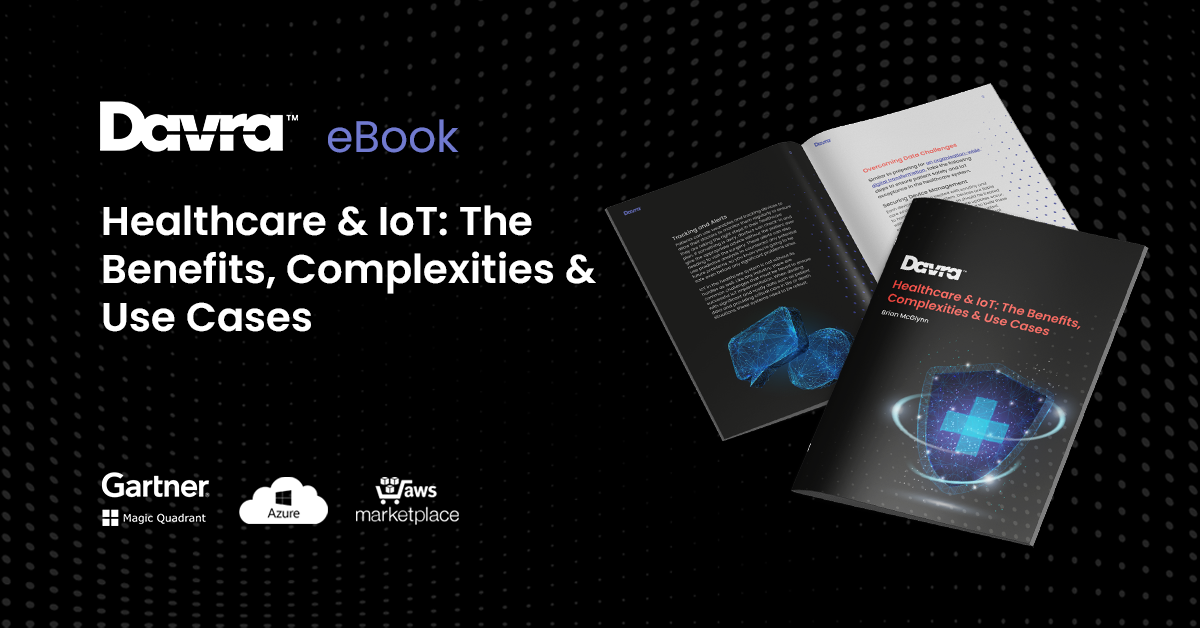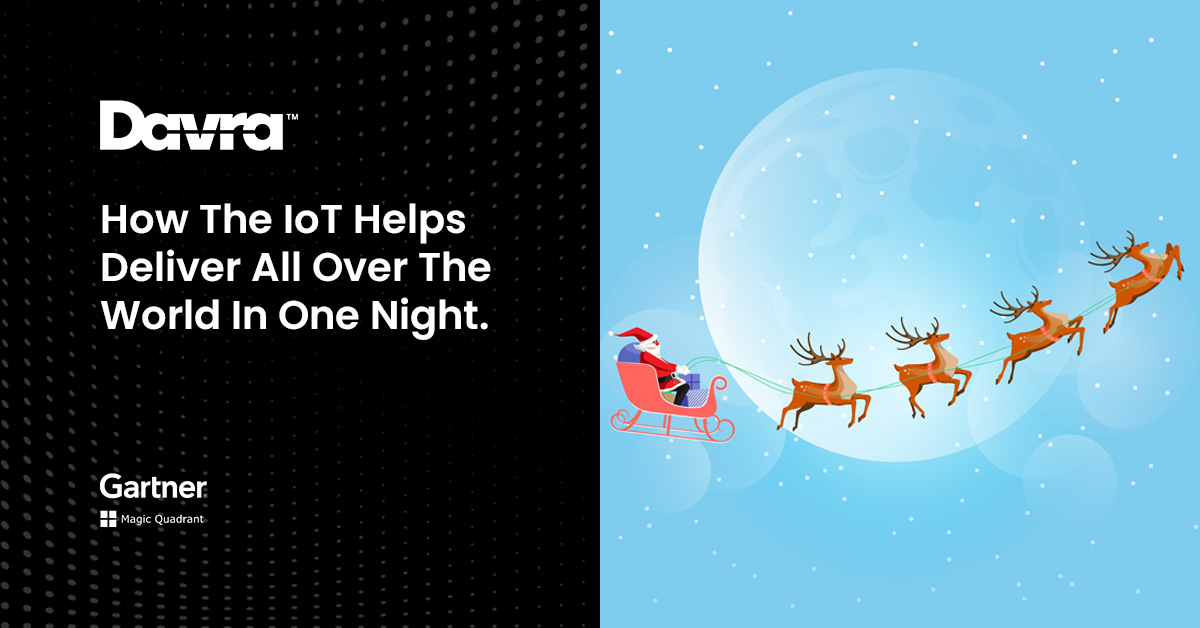IoT in Healthcare Use Cases eBook
Download Your Free IoT in Healthcare Use Cases eBook
Read More


Dec 24th , 11.59pm – A slightly overweight, elderly delivery man gets ready to leave his depot in the North Pole to set off on a well worn delivery route. The route is an ambitious one that will take him to almost every country in the world, delivering presents to roughly 700,000,000 children with approximately 233,000,000 stops (the science behind these numbers is documented very impressively here). It’s a route he’s traveled hundreds of times over the years and not always without incident, flying over London in 1940 was a pretty tough ride as was Northern France & Belgium in 1916 but he always gets his packages delivered, that’s all just part of the job. The last few years have been tough though, there are a lot more kids in the world, they’re getting a lot more deliveries and they’re also going to bed that little bit later, which is a logistical nightmare for our poor delivery man. This is the age of IoT however, so the tech team back at base has a few new ideas up their sleeve.
The team have been using technology on the manufacturing floor for a couple of years now, making the production lines more efficient, increasing quality levels and reducing downtime specifically in that all-important run-up to ‘The Big Day’. However this year they’ve decided to push the technological limits at the coal face of the business (although coal is definitely not something these guys like delivering) by adding some smart IoT functions on the delivery vehicle itself.
Rollout of the new ‘Internet of Toys’ Project looked a little like this.
Phase 1 – Vehicle Tracking & Geo-Fencing
Keeping track of this particular vehicle is pretty important, knowing where it is at all times is critical when working to such a tight schedule. GPS data from the onboard Cisco 829 ISR is fed directly to the Davratm IOT AEP platform and then in turn onto the myriad of tracking services that like to follow the big man (www.noradsanta.org being our personal favorite). Keeping him on track is also crucial, particularly later in his trip when the constant snacking on mince pies & brandy left out by the ‘clients’ can influence his route choices. External forces also need to be monitored so the Route Optimization function comes in very handy in case of snowstorms over Wisconsin or early rising children in China.
Phase 2 – Vehicle & Driver Behavior Management
Traveling from East to West with the sun, still only gives our intrepid delivery man 32 hours in which make his deliveries so breakdowns are completely unacceptable. Onboard tracking of any reindeer, I mean “engine” issues, fuel levels or other vehicle-related problems are all managed from HQ so spare parts, red nose maintenance, etc can be carried out in-flight if needs be. Breaking the speed limit is obviously an unfortunate but unavoidable necessity and can’t be helped but dropping below a certain speed (roughly 1800 miles per second) would seriously affect our ability to deliver on time so constant monitoring is critical.
Driver management is also important as to drink even a standard 50ml of brandy or sherry in each house (sure it would be rude not to) would put our driver roughly 50 million times over legal blood/alcohol limit in most parts of the world so constant feedback from a range of onboard sensors makes sure we don’t have a reoccurrence of the infamous Mojito incident of ’87. Of which we will speak no more of…
Phase 3 – Stock Control & Management
With approximately $50BN of stock onboard at the start of each trip ensuring we integrate with stock control, delivery management & dispatch systems is imperative.
Triggering automatic alerts if the wrong package is delivered can save valuable time on re-visits and in the rare case of over-demand on certain products (remember Buzz Lightyear action figures in 2003) alternative supplies or in journey re-stocks can be ordered on demand. Full integration with the onboard computer systems also means dynamic updates to the all-important ‘Naughty/Nice’ list can be made right through the night so thinking it’s a good idea to stay up late to try to catch the big man in action is never a good idea.
Phase 4 – Collaboration & Social Integration
Even a company as old as this one needs to move with the times so integrating social media feeds like Twitter, Facebook, and Instagram (here’s me eating mince pies in Dublin, etc, etc) is definitely a requirement the team at HQ will be looking at in the future. Delivery confirmation with integrated Ho, Ho, Ho’s and short Snapchat style video messages that disappear when the adults try to look at them are definitely on the cards for 2018 & beyond.
Given all the work that’s been done by the Tech team in 2019, they’re gonna take a well-deserved break now for a few months before starting out on their next generation of IoT updates. When asked for comments on their future plans North Pole CIO Mr. Felix Navidad said “We’ll probably leave Autonomous Vehicles & Drone deliveries to our friends in Amazon but we do like Googles Project Loon concept, having WiFi in all those remote parts of the world we deliver to would be great. We also have some plans around integrating webcam and surveillance video feeds to update the Naughty/ Nice list but we believe the NSA might have a patent on that one”
So there you have it folks, the Internet of Toys is here and its providing business benefits to companies of all shapes and sizes. So whether you’re an organization with a single delivery vehicle like our friends in the North Pole or a fleet of buses, trucks, and trains spread across the world isn’t it about time you got onboard!
Download Your Free IoT in Healthcare Use Cases eBook

Davra IoT is the only Industrial IoT Platform Available on AWS Marketplace
Read MoreThe Collaboration of Humans & Robots Has Created The Cobot
Read More